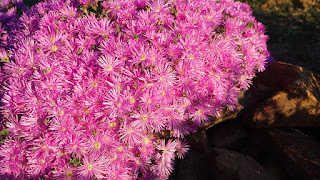Egg whisks are such wonderful tools
in the vegan kitchen, and having followed a vegan diet for 26 years I was
surprised to find that I didn’t know just how useful, essential actually, they
are for the vegan chef. It was my husband who showed me the completely valuable
role they perform, hours of time has been saved and a much better result has
been achieved in preparing foods now that I know the real reason egg whisks
were invented.
On the vegan dinner table it is quite
common to find legumes, beans, rice and quinoa and if the pulses are correctly
prepared you’ll find they are soft, easily digested and not the catalyst for
flatulence that many people assume them to be. There are two procedures you
need to undertake in order to get the best out of pulses in the kitchen. The
first is that you soak them, all pulses (beans and legumes) need to be soaked
and the soaking time differs from one pulse to the next. More on that later.
The second being that all pulses, rice and quinoa need to be rinsed and rinsed
well. This is where the egg whisk comes into play.
You’ll find it too easy to eat more
beans and legumes in your diet because soaked and washing them is very easy and
takes very little time. All you need to do is to put the quantity of pulses you
wish to cook into a bowl and cover them with about five centimetres of water.
When the required soaking time is finished give them a good rinse and they are
ready to be cooked. Rinsing pulses, rice and quinoa is essential for them to
cook nicely and be easily digested, using an egg whisk in the rinsing/washing
procedure will save you water and time.
All lots of water into your bowl of
soaked pulses or into the rice you wish to cook and use the whisk to wash them.
Agitate the rice or pulses in the water, using the whisk and the water give them
a good scrub. Drain and repeat twice more, the rinse water may not run too clear
and this is alright. Now drain and cook
them.
Soaking mung beans
A little bit about soaking and
rinsing pulses (beans and legumes that is) before you cook them, it’s a very
important step in preparing your legumes for healthy eating. Soaking pulses
reduces cooking time and renders them more digestible, reducing their causing
flatulence. In fact, if you are getting flatulence after eating legumes it is a
sign you are not preparing them correctly. Split red lentils, moong dal, urad
dal and other broken legumes soak for perhaps half an hour. The only dal you
will need to soak longer is chana dal and this is because it is made of broken
chickpeas and chickpeas have a long cooking time. Green lentils, puy lentils
(French lentils), whole red lentils and mung beans are best soaked for at least
an hour or more. Much longer soak times are required for chickpeas, kidney
beans and black beans. Being much larger they require more time to soak up
water so it makes sense. Putting chickpeas and red kidney beans on to soak
before you go to bed and using them the next day is a good idea.
Chickpeas, kidney beans and black
beans have a long cooking time, using a pressure cooker will greatly reduce
their cooking time and is a truly valuable addition to the kitchen. Soaked,
rinsed and home cooked pulses are vastly healthier and environmentally
friendly, they are also cheaper than their tinned cousins. Canned foods are not
alive and cause a sludge in the system. I avoid them. Red lentils and red
kidney beans are high in iron and are good for the blood so be sure to eat them
a few times a week.
One of my favourites, chana dal which is tomato based and made with chickpeas











